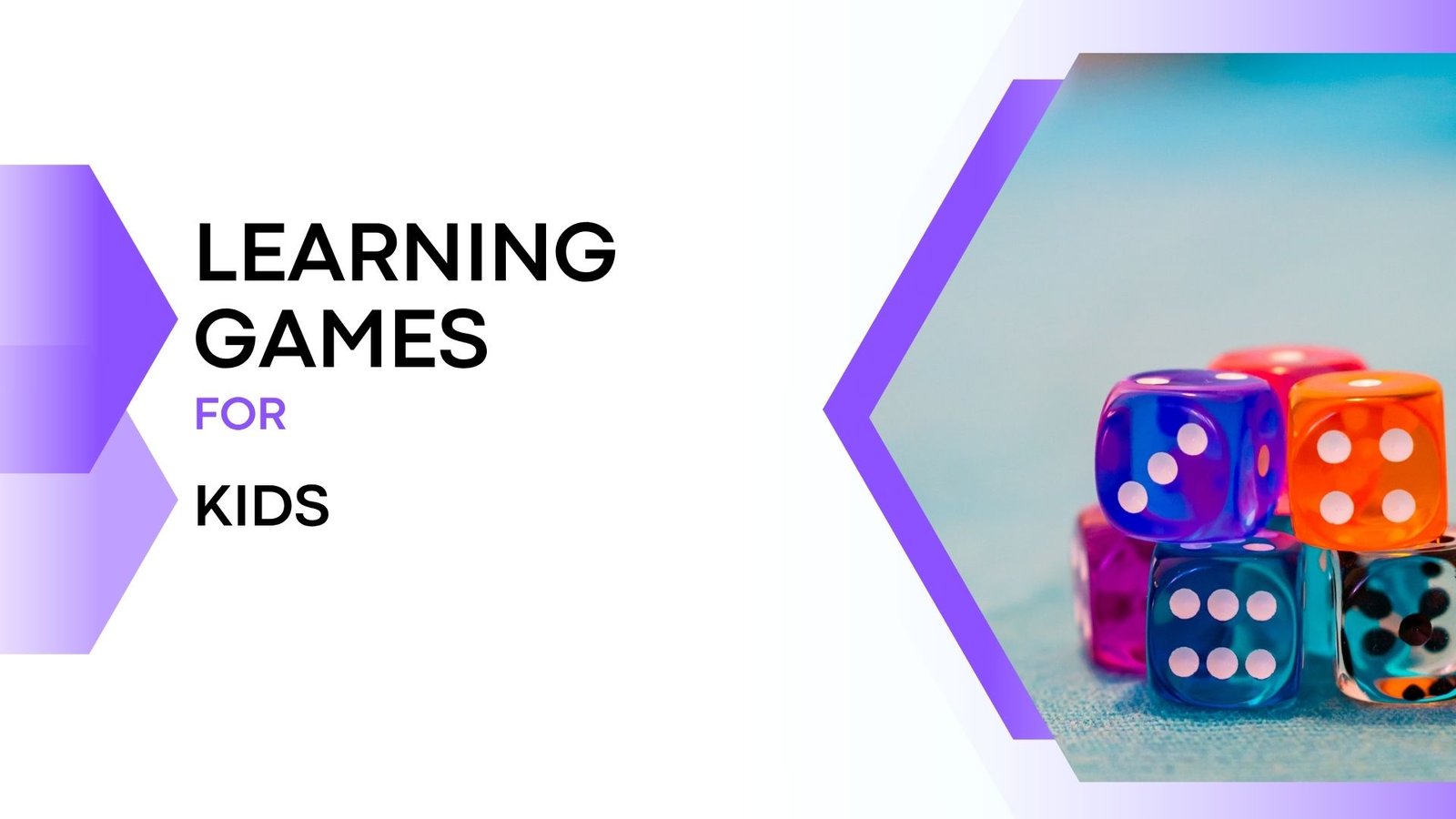Raising children in a fast-changing world means constantly adapting the way we teach, entertain, and guide their learning. While many parents still rely on traditional learning games for kids, not all of them are effective today.
Some activities that once seemed useful have become outdated, lack developmental value, or simply don’t match how today’s children learn. Replacing these old methods with modern, research-backed alternatives can make learning more engaging, fun, and developmentally richer for your child.
In this article, we’ll explore 10 outdated learning games for kids that parents should replace—and what to use instead. By understanding what doesn’t work anymore, you can give your child smarter, more effective learning experiences.
Simplify parenting with our app.
Click on This Link

10 Outdated Learning Games for Kids
1. Flashcards for Early Readers
Flashcards used to be the go-to tool for teaching basic concepts. Many parents still assume they are ideal learning games for kids, but research shows that rote memorization doesn’t support long-term learning.
Why It’s Outdated?
- It encourages memorization, not understanding
- Infants and preschoolers learn better through sensory experiences
- It creates pressure instead of curiosity
Try This Instead
- Word-picture storybooks
- Interactive phonics apps
- Real-life vocabulary learning (pointing to objects, describing actions)
Instead of drilling your child with flashcards, let them learn words through exploration and conversation.
2. Worksheet-Based Matching Games
Parents often print matching worksheets, thinking they are great learning games for kids. While these sheets may look educational, they don’t offer hands-on engagement.
Why It’s Outdated?
- Passive activity with limited sensory involvement
- No critical thinking or creativity
- Children get bored quickly
Try This Instead
- Real object matching (shapes, toys, household items)
- Interactive puzzles
- Montessori sorting trays
Hands-on play strengthens cognitive skills better than repetitive worksheets.
3. Alphabet Tracing with Pencil and Paper for Toddlers
Tracing letters on paper has been a common activity for generations, but it’s unsuitable for early motor development.
Why It’s Outdated?
- Toddlers lack fine motor strength for pencil control
- Causes frustration and discourages writing interest
- No multi-sensory input
Try This Instead
- Sand tracing
- Finger painting letters
- Wooden tracing boards
- Playdough letter formation
These modern learning games for kids promote muscle development naturally and joyfully.
4. Old-Style Memory Card Games
Traditional memory card games involve flipping identical cards until pairs match. While this classic method has some cognitive benefits, it doesn’t engage children beyond simple matching.
Why It’s Outdated?
- Too repetitive
- Limited skill development
- Doesn’t promote higher-order thinking
Try This Instead
- Story-based memory games
- Sequence-building games
- Interactive digital memory adventures
Modern versions combine logic, storytelling, and visual learning—making them more powerful learning tools.
5. Static Board Games Without Interaction
Games like old-fashioned Snakes and Ladders or basic counting boards are still considered by parents as “educational.” However, these traditional learning games for kids teach very little and offer minimal skill-building opportunities.
Why It’s Outdated?
- No decision-making or strategy
- Purely luck-based
- Children lose interest quickly
Try This Instead
- Strategy-based board games like Connect Four
- Number-based adventure games
- Reggio Emilia open-ended board setups
These modern alternatives teach problem-solving, logic, and emotional regulation.
6. Colouring Books as a Learning Activity
Colouring books can be relaxing, but they aren’t effective learning games for kids as a main educational tool.
Why It’s Outdated?
- Limits creativity (children only fill pre-designed shapes)
- No cognitive or problem-solving engagement
- Overused as a busy activity
Try This Instead
- Free drawing
- Sensory art activities
- Collage making
- Nature-inspired art (leaf stamping, clay patterns)
Open-ended art boosts imagination and cognitive flexibility.
7. Traditional Counting Games with Beads Only
Bead-counting on abacuses has been a classic math-learning tool. While still valuable, restricting early numeracy to bead-counting alone doesn’t support conceptual math understanding.
Why It’s Outdated?
- Focuses on counting but not on number sense
- Lacks real-life context
- Doesn’t promote conceptual thinking
Try This Instead
- Number scavenger hunts
- Real-life math (sorting groceries, sharing snacks)
- Montessori number rods
- Digital number stories
Children learn math better when numbers become meaningful, not just memorized.
8. Outdated Quiz Games
Parents often use oral quiz-style learning games for kids, asking questions like “What is this color?” or “What is this shape?” While quizzes may seem helpful, they can limit natural exploration.
Why It’s Outdated?
- Puts pressure on kids to answer correctly
- Doesn’t promote curiosity
- Turns learning into testing
Try This Instead
- Discovery-based games (hide-and-seek objects)
- Story-based learning
- Interactive sorting and classification
Children need experiences, not interrogations, to build strong foundations.
9. Passive Screen Time with “Educational Videos”
Many parents assume that animated educational videos count as learning games for kids, but passive watching offers minimal learning benefits.
Why It’s Outdated?
- One-way learning
- Reduces attention span
- No real interaction or feedback
- Overstimulating visuals hinder deep learning
Try This Instead
- Interactive educational apps
- AI-powered learning adventures
- Augmented reality games that combine physical and digital play
Today’s tools enable active participation, not passive consumption.
10. Old-Style Puzzle Books
Puzzle books with mazes, connect-the-dots, or spot-the-difference used to be popular. But children today learn better through dynamic, hands-on experiences.
Why It’s Outdated?
- Limited variety
- No sensory interaction
- Doesn’t adapt to the child’s skill level
Try This Instead
- STEM kits
- Magnetic puzzles
- Real-life problem-solving games
- Escape room-style challenges for kids
Modern puzzles build critical thinking, STEM skills, and creativity.
Why Replacing Outdated Games Matters?
Children learn differently today. With exposure to technology, diverse environments, and multi-sensory experiences, modern learning games for kids need to be engaging, adaptive, and developmentally aligned.
Switching to updated learning tools helps your child:
- Develop curiosity
- Practice problem-solving
- Improve critical thinking
- Build emotional and social skills
- Strengthen fine and gross motor abilities
By choosing the right activities, parents can support well-rounded growth in a fun, meaningful way.
How to Choose Better Learning Games for Kids?
When selecting new learning tools or play methods, keep these guiding principles in mind:
✔ Promote Active Learning
Children should interact, think, create, or make decisions—not just watch or memorize.
✔ Encourage Hands-On Exploration
Sensory experiences accelerate brain development.
✔ Allow Open-Ended Play
Children should be able to use materials differently each time.
✔ Be Age-Appropriate
Learning games for kids must match their developmental stage.
✔ Support Real-Life Problem Solving
The best games help kids handle everyday challenges.
✔ Include Emotional Development
Modern learning includes empathy, patience, resilience, and confidence.
How Can KidsCur Help?
As parents, it’s important to recognize which methods no longer help your child grow and which modern alternatives can enrich their learning experience. Many traditional learning games for kids were created at a time when learning depended on memorization and repetition.
Today’s world demands creativity, adaptability, and hands-on discovery.
By replacing outdated activities with interactive, child-centered, and developmentally sound games, you’ll help your child develop stronger skills—and enjoy learning along the way.
KidsCur offers parents thoughtful and evidence-based nutritional tips that make feeding little ones less stressful and more joyful. By drawing on the latest pediatric research, pediatric nutritionist guidance, and real-life parental experiences, the app covers everything from starting solids to managing picky eaters. Download the app now!
FAQs
Does KidsCur offer age-specific nutritional advice for babies and toddlers?
Yes. KidsCur provides detailed, age-wise nutritional guidance—from breastfeeding and formula tips for infants to balanced meal ideas for toddlers. Each recommendation is based on pediatric best practices and developmental needs.
Can KidsCur help me manage picky eating in my child?
Absolutely. KidsCur offers practical strategies for handling picky eaters, including meal planning tips, food introduction methods, and creative ways to make nutritious foods more appealing to children.
Does KidsCur provide information on food allergies and safe food introduction?
Yes. KidsCur includes expert-backed articles on introducing allergenic foods safely, recognizing symptoms of food allergies, and choosing the right foods during early feeding stages to support healthy growth.



